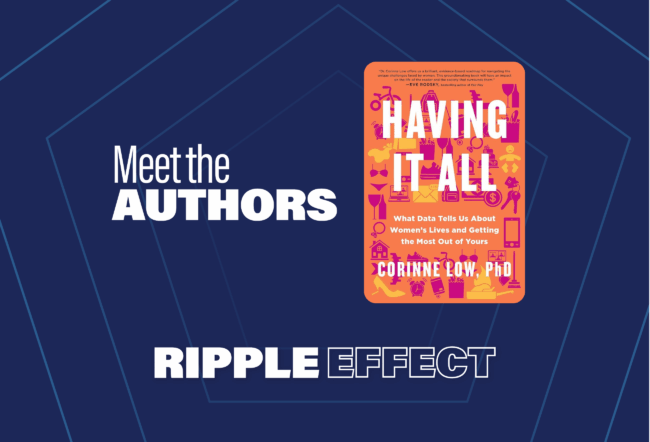It was the cellphone-video seen round the world: Two black men in a Philadelphia Starbucks being arrested. Their crime? Sitting in the coffee shop without so much as buying a nitro cold brew or smoked-turkey protein box. A manager had asked them to leave, and then called the police to take them away.
Video of the arrests was viewed millions of times on social media, and Starbucks was compelled to take action. Executive chairman Howard Schultz said the store manager was acting on her “unconscious bias,” and the company apologized to the two men.
Longer-term, Starbucks responded by announcing it would close 8,000 company-owned stores nationwide for several hours on May 29 to lead its 175,000 employees in racial-bias education. “During that time, [employees] will go through a training program designed to address implicit bias, promote conscious inclusion, prevent discrimination and ensure everyone inside a Starbucks store feels safe and welcome,” the company said in a statement.
The curriculum — developed with input from a panel including former U.S. Attorney General Eric Holder as well as officials from the NAACP — will become required learning for all current and future workers.
The response strikes many as strong and decisive, and calls to boycott Starbucks have become muted. But will it work? Can more and better training really result in workers who stop, think and change their ways?
“Some people aren’t aware that these incidents are epidemic, so helping them become aware of how prevalent they are might be helpful,” says Wharton management professor Stephanie Creary, whose research focuses on identity, diversity and inclusion. “Some people know their biases and are not interested in changing their attitudes or behavior, and some people know their biases and want to change.” Diversity training can vary widely, she adds. Some programs may focus on raising awareness of biases; other programs may focus on changing biased attitudes; some may focus on changing biased behaviors, and some may focus on a little of each.
When the goal of training is to change underlying attitudes and beliefs, Creary says, “the evidence is really flimsy on whether diversity training works. However, research in social psychology suggests, in general, that changing behavior can actually lead to attitude change. So, designing diversity training programs that focus on changing biased behavior in the short term can be key to changing biased attitudes over the longer term.”
“I don’t know whether we can unlearn unconscious bias, but it is certainly possible to train people to change their behavior. That is an important distinction, especially for employers,” says management professor Peter Cappelli, director of Wharton’s Center for Human Resources. “It is very important what [employees] do. It is much less important what they actually think.”
Whatever the actual educational value of the training Starbucks workers will receive, the example of a company with as much visibility as this one closing all its stores makes a statement, says Wharton marketing professor Americus Reed. “It’s always hard to tease out the moral argument from the economic argument, because you are protecting the brand equity over the long run. The last thing you want to do is have people wake up and rethink their habit of getting their $7 coffee every morning,” he says. On the other hand, closing the stores for training makes enough of a statement that “when something similar happens again elsewhere, others are going to say, ‘What are you going to do?’ It’s almost like setting the standard, [where the normal response is] taking a costly measure to send a strong signal that this is important.”
“Designing diversity training programs that focus on changing biased behavior in the short term can be key to changing biased attitudes over the longer term.”–Stephanie Creary
Everyone Is Biased – Even You
Picture the same manager of the Philadelphia Starbucks calling the police on a white man in a business suit or a pony-tailed mother with a toddler and you have some idea of the daily travails of many African Americans. It’s hard to imagine that, given momentary loitering by either of these other patron types, the episode in Starbucks that day would have ended the same way.
But if customers suffer from stubbornly enduring racial-based slights and aggressions, bias has also had a pernicious effect on work-life. Bias, both conscious and unconscious, touches every part of the career arc, says Wharton management professor Sigal Barsade, who consults with employers on anti-bias education. “It happens in every single part of the process — from the point of entry, literally who gets hired, there is a voluminous amount of research showing there are differences in how people are treated based on race, ethnicity, gender, sexual orientation, physical appearance — on any dimension where we are somehow different from others.”
Bias reaches into decisions about who gets chosen for certain kinds of assignments, how employees are judged in evaluations, and who gets promoted.
Some acts of bias might be classified as micro-inequities — “non-verbal kinds of behavior that make people feel very small and belittled,” says Barsade, “like every time you speak to someone they look at their watch or their iPhone. It’s hard to put your finger on it; you feel disrespected, but it’s hard to say why.”
“It is very important what [employees] do. It is much less important what they actually think.”–Peter Cappelli
But other acts show up quite clearly in the data and have a profoundly distorting effect on the course of one’s career. Barsade notes that a voluminous number of studies have shown this. “For example, on resumes where there is an indication of race, applicants who are black get fewer call-backs than those who are white. Even within academic contexts, there are studies showing that letters of recommendation for women are shorter, that there are more references to their personal life, and more doubts are raised by damning with faint praise.”
Experts say that we all have bias. It’s part of who we are, says Frank Dobbin, a Harvard University professor of sociology. “Bias is what we used to call stereotyping, and we do it all the time,” says Dobbin, whose research focuses on discrimination, inequality and public policy. “Stereotyping comes from our natural inclination to categorize things — things you should eat or not eat, animals that are dangerous and not, and of course in a much more fine-grained way, we tend to categorize groups of people based on where they are in the social structure.”
The fact that bias is hard to change is to be expected, he says. “If I could somehow change your mind about something you have unconscious thoughts about in an hour of training, the world would be a pretty chaotic place. People would have less stable personalities than they do. But they have stable personalities based on decades of experience.”
Bias is a function of how our brains work, coupled with evidence about the world formed in childhood and influenced by outside information gathered from sources like the media, and the resulting biases are often unconscious, says Barsade. “You can be the most consciously unbiased, progressive thinker and still have unconscious biases that come from our culture and things you experienced as a child, and they don’t necessarily align with your beliefs.”
Dobbin argues that anti-bias training often backfires. “Firms have long relied on diversity training to reduce bias on the job, hiring tests and performance ratings to limit it in recruitment and promotions, and grievance systems to give employees a way to challenge managers. Those tools are designed to preempt lawsuits by policing managers’ thoughts and actions. Yet laboratory studies show that this kind of force-feeding can activate bias rather than stamp it out,” writes Dobbin with Alexandra Kalev in “Why Diversity Programs Fail,” published in the July-August 2016 Harvard Business Review. “As social scientists have found, people often rebel against rules to assert their autonomy. Try to coerce me to do X, Y, or Z, and I’ll do the opposite just to prove that I’m my own person.”
The desire to look fair-minded is more powerful than “control tactics,” concluded Dobbin and Kalev after analyzing three decades of data from 800 firms and interviewing hundreds of managers and executives. “The positive effects of diversity training rarely last beyond a day or two, and a number of studies suggest that it can activate bias or spark a backlash. Nonetheless, nearly half of midsize companies use it, as do nearly all the Fortune 500,” they write.
“It’s almost like setting the standard, [where the normal response is] taking a costly measure to send a strong signal that this is important.”–Americus Reed
Anti-bias training “doesn’t do a lot, but if it is to do something positive it could give people some strategies,” says Dobbin. “In the case of Starbucks, anti-bias training could have given the manager who called the police a mental exercise to ask herself what she would have done if the two people in Starbucks staying too long had been women with babies, or men in business suits. ‘How would I behave then?’ One thing it can do is get people to recognize their behavior and make better decisions about what to do next.”
Anti-bias Strategies That Work
A powerful part of a workshop that Barsade conducts regarding unconscious bias that opens eyes is showing participants a video of the classic “doll test” from the 1940s designed by psychologists Kenneth and Mamie Clark that demonstrates how early in life perceptions around race are formed. In the Clark experiment, African-American children ages four to seven were shown four dolls that were exactly the same except for color, and then were asked to identify the colors and indicate a preference. A majority chose the white doll and ascribed positive characteristics to it.
She says that bias often stems from fear and anxiety (rather than animosity), and that she has found that when people are presented with a deeper understanding of how our brains work, what unconscious bias is and where it comes from, as well as its negative outcomes at work, they generally react positively to the concept of learning about unconscious bias and how to try to proactively deal with it (at both the individual and organizational level).
Barsade believes the effectiveness of unconscious bias education hinges on a number of factors. It’s important that the education flows to and from a larger workplace context — that workers get the message that anti-bias is part of the overall culture, not just lip-service; that anti-bias discussions take place outside of an educational seminar, in formats like hiring or job evaluations; and that the organization’s culture is conducive to having honest discussions without fear of recrimination.
“Good unconscious bias education educates people about what the phenomenon itself is, where it comes from biologically and psychologically, that we are not hard-wired against a particular group, but that around the world people are biased against all sorts of things, and it shows them data and evidence,” Barsade says. “Good education is explaining how it manifests itself in the workplace, and ultimately you need to help people understand what can be done about it. You educate people about what it is and what they can do both individually and organizationally.”
“If I could somehow change your mind about something you have unconscious thoughts about in an hour of training, the world would be a pretty chaotic place.”–Frank Dobbin
Outside of training, what can companies do to promote an anti-bias culture? “Certainly, things like mentoring, active recruitment programs, the creation of task forces that deal with diversity — all of these put people side-by-side working on something, and that appears to be much more effective at promoting workforce diversity,” says Dobbin. “If I were the head of Starbucks, I’d make it a priority to make sure the restaurant teams are as diverse as possible. It would do two things. It could cause people to be a little more careful in their decisions about whether to call the police. But it will also, from all we know research-wise, reduce racial stereotyping and racial animosity, especially for people who have not been much exposed to co-equal work situations.”
Whether anti-bias training can be effective depends in part on whether the single shot of training Starbucks is doing is an isolated event, or part of a larger corporate effort. “One day of training only goes so far in altering self-awareness, changing behavior or changing attitudes, so Starbucks really has to be thoughtful,” says Creary. “Is this a one-time intervention, or a training that is expected to happen annually, quarterly, bi-annually? Research suggests that diversity training that is aligned with a larger set of diversity and inclusion initiatives can be more effective than standalone training.”
Employee resource groups creating micro-programs to continue conversations about bias and formal programs creating accountability are necessary follow-ups. “It’s in the day-to-day reinforcement of desired behavior that behavior actually changes,” Creary says.
Still needed, she notes, are next waves of research around interventions that work. “What has happened in the last few years is we have seen an onslaught of research that says people are biased. We have decades of research supporting these conclusions,” says Creary. “Some research suggests that unconscious bias training can make people more aware of their biases. The future is in interventions that can change their behavior now and perhaps their attitudes over the long-run.”
Still, the fact that the Starbucks episode has drawn such a strong response strikes many as progress. “The very fact that we’re raising this issue is such an advance societally,” says Barsade. “I don’t think we can minimize that. Is it enough? Of course not.”
“You can be the most consciously unbiased, progressive thinker and still have unconscious biases that come from our culture and things you experienced as a child, and they don’t necessarily align with your beliefs.”–Sigal Barsade
Says Dobbin: “It’s encouraging that a lot of companies are trying to do something. It may move us a little closer. These things tend to go in waves. I worry that in three years when we may be in another financial crisis the problems will not have been solved.” He notes that it’s been more than half a century since Congress passed the Civil Rights Act, and progress has stalled in terms of women and members of minority groups moving into management roles. “It certainly feels different, but there have been times in the past when it felt like there was a lot of movement,” he adds. “I don’t see stereotyping going away anytime soon. I don’t see the problem solved immediately. But it is encouraging that there is so much attention and so many companies are trying to do things.”
The current momentum, in fact, may be a countervailing response — a collective desire to do the right thing — as moral leadership from the highest reaches of government falters. “I think it’s safe to assume that the current sociopolitical climate is contributing to people’s desire to fix these issues,” says Creary. “What we are experiencing outside of the workplace is permeating our workplace, including the divisive politics of the U.S. and the rise of populist discourse in many countries.”
She notes that workplace issues around equity, fairness and personal safety are also becoming part of the national discourse as evidenced by the emergence of the #MeToo and Time’s Up movements. “Collectively and simultaneously, we are feeling empowered and powerless, and I think we are at a tipping point,” Creary says. “But we need to do more than shout and proclaim that bad things are happening. We need to show people what respectful behavior at work looks like so that all employees can feel supported and have the opportunity to be successful and all customers can feel welcomed — not just a privileged few.”
She notes that she was pleased to see that Starbucks believes it is their responsibility to fix biased behavior in their stores. “We just don’t know their longer-term strategy and how their one-day training will be reinforced.”



